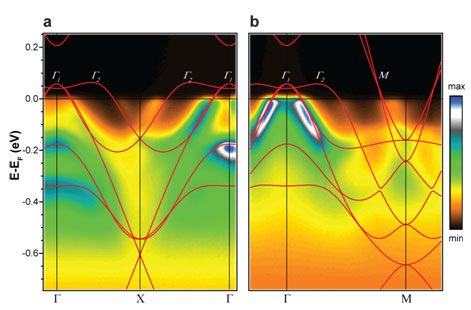The recent discovery of superconductivity in iron-based layered compounds has created renewed interest in high temperature superconductivity. With a superconducting transition temperature as high as 55 K, this discovery not only ended the monopoly of copper oxides in the family of high temperature superconductors, but also provides a new direction to understand the essential ingredients for achieving a high superconducting transition temperature. Some early experiments seem to hint that these iron-based layered compounds, known as iron oxypnictides, have a strong similarity with the copper oxide superconductors. Although rather early in the game, extensive theoretical investigations were carried out to understand the superconducting mechanism. An important current issue is the nature of the ground state of the undoped parent compounds. Two distinct classes of theories were put forward characterized by contrasting underlying band structures: a local moment antiferromagnetic ground state for the "strong coupling approach" and an itinerant ground state for the "weak coupling approach". The former stresses the resemblance to copper oxide superconductors, while the latter suggests a different mechanism for superconductivity in the new iron-based superconductors.
The debate over these two approaches is partly due to the lack of conclusive experimental information on the electronic structure of iron-based superconductors. In a recent paper published in Nature, SSRL scientist Donghui Lu, along with his co-workers in Prof. Zhi-Xun Shen's group and Prof. Ian Fisher's group at Stanford University, reported the first angle-resolved photoemission study on one of the new iron-based superconductors - LaOFeP. This study provides critical information on the electronic structure of the parent compounds of the new iron-based superconductors. It favors the weak coupling approach based on an itinerant ground state over the strong coupling approach assuming an antiferromagnetic ground state. Furthermore, the reported data reveal important differences between these new iron-based superconductors and copper oxide superconductors:
| i) | the new iron-based superconductor has a much higher density of states near the Fermilevel; |
| ii) | it has multiple bands and Fermi surface sheets; |
| iii) | it shows no apparent evidence of the pseudogap effect that is ubiquitous in underdoped copper oxide superconductors. |
Among the experimental observations, the most striking feature is the quantitative agreement between the angle-resolved photoemission spectra and the theoretically calculated band dispersions using local-density approximation (LDA) (Figure 1). Despite the fact that a band renormalization and a Fermi level shift are needed to perfectly match the LDA calculations and the observed band dispersions, the overall level of agreement between the experiments and the calculations is significant: nearly all features in experimental data have corresponding bands in the calculations. This suggests that the LDA with the assumption of an itinerant ground state captures the essence of the electronic structure of LaOFeP, and so strongly favors the weak coupling approach based on an itinerant ground state. While there are many other important issues to be resolved, this work serves as a starting point of the long journey towards unveiling the mechanism of superconductivity in this exciting new family of high temperature superconductors.

D. H. Lu, M. Yi, S.-K. Mo, A. S. Erickson, J. Analytis, J.-H. Chu, D. J. Singh, Z. Hussain, T. H. Geballe, I. R. Fisher & Z.-X. Shen, Nature 455, 81 (2008).




